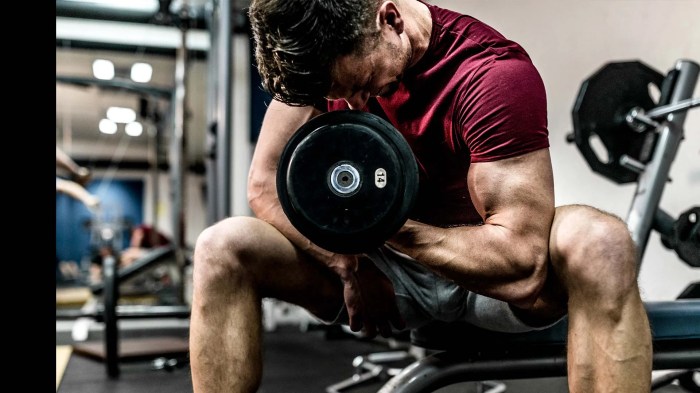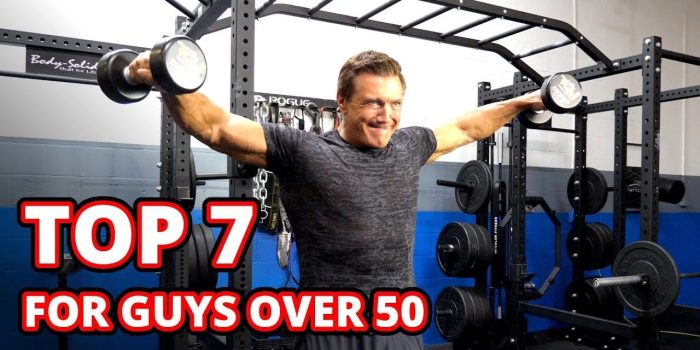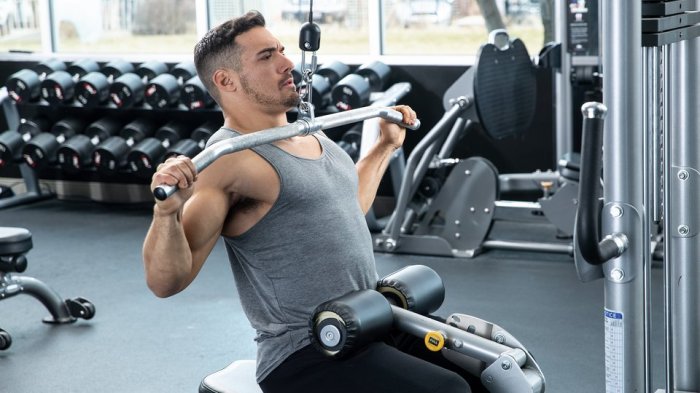As we delve into the realm of best weight lifting workouts to lose weight, let’s embark on a journey of knowledge and transformation. With the right approach, weight lifting can become a catalyst for shedding pounds and sculpting a leaner physique.
In this comprehensive guide, we’ll uncover the most effective exercises, provide a sample workout plan, and explore the principles of progressive overload and nutrition. Get ready to unlock your weight loss potential and achieve your fitness goals.
– Best Weight Lifting Exercises for Weight Loss

Weight lifting is an essential component of any weight loss program. It helps you build muscle, which boosts your metabolism and burns fat. The best weight lifting exercises for weight loss are compound exercises that target multiple muscle groups at once.
Compound exercises are more efficient than isolation exercises, which target only one muscle group at a time. This is because compound exercises require more energy to perform, which means you burn more calories. Additionally, compound exercises help you build more muscle mass, which further boosts your metabolism.
Best Compound Exercises for Weight Loss
Here are some of the best compound exercises for weight loss:
- Barbell squats
- Dumbbell lunges
- Push-ups
- Pull-ups
- Overhead press
- Deadlifts
These exercises target multiple muscle groups and are highly effective for burning calories and building muscle.
Benefits of Weight Lifting for Weight Loss
Weight lifting offers several benefits for weight loss, including:
- Increased muscle mass: Muscle burns more calories than fat, so building muscle can help you boost your metabolism and burn more calories throughout the day.
- Improved insulin sensitivity: Weight lifting can help improve your body’s sensitivity to insulin, which is a hormone that helps regulate blood sugar levels. Improved insulin sensitivity can help you burn fat more efficiently.
- Reduced appetite: Weight lifting can help reduce your appetite, which can lead to decreased calorie intake and weight loss.
Sample Workout Plan
Here is a sample workout plan that incorporates the best weight lifting exercises for weight loss:
- Monday: Barbell squats, dumbbell lunges, push-ups
- Tuesday: Rest
- Wednesday: Pull-ups, overhead press, deadlifts
- Thursday: Rest
- Friday: Barbell squats, dumbbell lunges, push-ups
- Saturday: Rest
- Sunday: Rest
This workout plan is just a starting point. You can adjust it to fit your fitness level and goals. It is important to start slowly and gradually increase the weight and intensity of your workouts over time.
Proper Form and Technique
Proper form and technique are essential for maximizing the effectiveness of your weight lifting workouts and minimizing the risk of injury. When performing any exercise, be sure to:
- Use a weight that is challenging but not too heavy.
- Maintain good posture throughout the exercise.
- Control the movement and avoid using momentum.
- Breathe deeply throughout the exercise.
Progression
As you progress in your weight lifting workouts, it is important to gradually increase the weight and intensity of your workouts. This will challenge your body and promote continued progress. You can increase the weight by adding more weight to the barbell or dumbbells, or by using a heavier weight for the same number of repetitions.
Sample Weight Lifting Workout Plan
To design an effective weight lifting workout plan for weight loss, it’s crucial to incorporate exercises that target multiple muscle groups, promote metabolic activity, and challenge your body. Here’s a sample workout plan that includes the best weight lifting exercises for weight loss, along with the recommended sets, repetitions, and rest periods.
Remember to warm up before each workout with 5-10 minutes of light cardio and dynamic stretching. Cool down afterward with 5-10 minutes of static stretching.
Barbell Back Squat
- Sets: 3-4
- Repetitions: 8-12
- Rest: 60-90 seconds
This compound exercise works your glutes, hamstrings, quadriceps, and core.
Progressive Overload for Weight Loss
Progressive overload is a fundamental principle of weightlifting that involves gradually increasing the weight or resistance over time. It’s crucial for weight loss as it stimulates muscle growth and fat loss.By consistently challenging your muscles with heavier weights, you force them to adapt and grow stronger.
This increased muscle mass boosts your metabolism, helping you burn more calories at rest and during exercise.
Tips for Progressive Overload
- Increase weight by 5-10% every 2-4 weeks.
- Increase the number of sets or repetitions.
- Reduce rest time between sets.
- Choose exercises that target multiple muscle groups.
- Focus on proper form to prevent injuries.
Benefits of Progressive Overload
Progressive overload not only promotes muscle growth but also enhances fat loss:
- Increased Calorie Expenditure:Building muscle requires energy, which means you burn more calories even when resting.
- Improved Insulin Sensitivity:Muscle mass helps regulate blood sugar levels, improving insulin sensitivity and reducing fat storage.
- Enhanced NEAT:Non-exercise activity thermogenesis (NEAT) refers to calories burned outside of exercise. Muscle mass increases NEAT, leading to additional calorie expenditure.
Nutrition for Weight Loss with Weight Lifting

Nutrition plays a pivotal role in maximizing weight loss results when combined with weight lifting. To achieve optimal weight loss, it’s crucial to follow a balanced and nutrient-rich diet that complements your weightlifting regimen.
The macronutrient composition of your diet is particularly important. Here are some guidelines to consider:
Protein
Protein is essential for building and repairing muscle tissue, which is crucial for weight loss. Aim for a daily protein intake of 1.2-1.7 grams per kilogram of body weight (0.5-0.8 grams per pound).
Carbohydrates
Carbohydrates provide energy for your workouts and daily activities. Choose complex carbohydrates such as whole grains, fruits, and vegetables. Aim for a moderate carbohydrate intake, around 4-6 grams per kilogram of body weight (1.8-2.7 grams per pound) per day.
Fats, Best weight lifting workouts to lose weight
Healthy fats are essential for hormone production and overall health. Include healthy fats in your diet from sources such as olive oil, avocados, and nuts. Aim for a fat intake of around 1-1.2 grams per kilogram of body weight (0.4-0.5 grams per pound) per day.
Healthy Eating Habits
In addition to macronutrient intake, follow these healthy eating habits:
- Eat regular meals throughout the day to prevent overeating.
- Hydrate adequately by drinking plenty of water.
- Limit processed foods, sugary drinks, and unhealthy fats.
- Cook more meals at home to control ingredients and portion sizes.
Meal Planning
Plan your meals ahead of time to ensure you’re making healthy choices. Here are some tips:
- Include a variety of nutrient-rich foods from all food groups.
- Prepare meals that are high in protein and fiber to promote satiety.
- Cook in bulk to save time and ensure you have healthy meals on hand.
- Consider consulting with a registered dietitian or nutritionist for personalized advice.
Recovery and Rest for Weight Loss: Best Weight Lifting Workouts To Lose Weight
Recovery and rest are crucial for weight loss, as they allow the body to repair and rebuild, regulate hormones, and reduce stress.
Muscle Repair and Growth
During weight lifting, muscles undergo micro-tears. Rest allows these muscles to repair and grow stronger, leading to increased muscle mass and metabolism.
Hormone Regulation
Rest helps regulate hormones like cortisol and growth hormone, which play a role in metabolism and appetite control. Adequate rest can optimize these hormones for weight loss.
Stress Reduction
Exercise can induce stress on the body, which can lead to overeating. Rest allows the body to recover from stress and reduce the likelihood of stress-related overeating.
Tips for Recovery and Rest
- Aim for 7-9 hours of sleep per night.
- Drink 8-10 glasses of water per day.
- Engage in light exercise or stretching on rest days.
- Incorporate stretching and foam rolling into your routine to improve flexibility, reduce muscle soreness, and enhance circulation.
Benefits of Recovery and Rest for Weight Loss
| Benefit | Description ||—|—|| Muscle repair | Allows muscles to rebuild and grow stronger || Hormone regulation | Helps regulate hormones that control metabolism and appetite || Stress reduction | Reduces stress levels, which can lead to overeating || Improved sleep | Enhances sleep quality, which is essential for weight loss || Reduced muscle soreness | Decreases muscle soreness, making it easier to exercise consistently |
Additional Resources
- Articles from reputable health organizations
- Books on the topic
- Online forums or support groups
Frequency and Duration of Weight Lifting Workouts
To maximize weight loss with weight lifting, determining the optimal workout frequency and duration is crucial. This depends on your fitness level and goals.
Lifting weights multiple times per week promotes muscle growth, boosts metabolism, and enhances fat oxidation. Rest days and deload periods are equally important for recovery, injury prevention, and muscle development.
Recommended Workout Frequencies and Durations
| Fitness Level | Goal | Frequency | Duration |
|---|---|---|---|
| Beginner | Weight loss | 2-3 times per week | 30-45 minutes |
| Intermediate | Weight loss and muscle gain | 3-4 times per week | 45-60 minutes |
| Advanced | Weight loss and significant muscle gain | 4-5 times per week | 60-75 minutes |
As you progress, gradually increase workout frequency and duration. Listen to your body and rest when needed. Consistency and motivation are key to achieving your goals.
Warm-Up and Cool-Down for Weight Loss
Warming up before weight lifting workouts prepares your body for the intense activity, reducing the risk of injury and improving performance. Cooling down afterward helps your body recover and reduces muscle soreness.
An effective warm-up routine should gradually increase your heart rate and body temperature, while also activating the muscles you’ll be using during your workout. Dynamic stretching, which involves moving your muscles through their full range of motion, is a great way to warm up.
Warm-Up Exercises
- Light cardio for 5-10 minutes, such as jogging or cycling
- Dynamic stretches for the major muscle groups involved in your workout, such as arm circles, leg swings, and torso twists
- Joint rotations, such as shoulder rolls and hip circles
A cool-down routine should gradually decrease your heart rate and body temperature, while also helping to flush out waste products from your muscles. Static stretching, which involves holding a stretch for 15-30 seconds, is a good way to cool down.
Cool-Down Exercises
- Light cardio for 5-10 minutes, such as walking or swimming
- Static stretches for the major muscle groups involved in your workout, such as holding a quad stretch, hamstring stretch, and chest stretch
- Foam rolling to help release muscle tension
By following a comprehensive warm-up and cool-down routine, you can help to improve your weight lifting performance, reduce your risk of injury, and promote recovery.
Importance of Proper Form and Technique for Weight Loss

Maintaining proper form and technique during weight lifting exercises is crucial for effective weight loss and overall fitness. It ensures that you target the correct muscles, maximize calorie burn, and prevent injuries.
Benefits of Good Form
| Benefits | Consequences of Poor Form |
|---|---|
| Increased muscle activation | Reduced muscle activation |
| Improved range of motion | Limited range of motion |
| Reduced risk of injury | Increased risk of injury |
| Enhanced calorie burn | Reduced calorie burn |
| Improved posture | Poor posture |
Role of a Qualified Fitness Professional
A qualified fitness professional can guide you in achieving and maintaining proper form. They can assess your current fitness level, identify any imbalances or weaknesses, and provide personalized instruction to ensure you perform exercises correctly.
Tips for Maintaining Good Form
- Start with a weight that is challenging but allows you to maintain good form.
- Focus on controlling the movement throughout the entire range of motion.
- Keep your core engaged and your spine neutral.
- Use a spotter if necessary, especially for heavy lifts.
- Listen to your body and stop if you feel any pain.
Importance of Warming Up and Cooling Down
Warming up before and cooling down after weight lifting exercises is essential for injury prevention and muscle recovery. Warming up prepares your body for the strenuous activity by increasing blood flow and muscle temperature. Cooling down helps reduce muscle soreness and stiffness by promoting blood flow and removing waste products.
Weight Loss Plateau and Breaking Through

Weight loss plateaus are periods when weight loss stalls or slows down significantly. They can be frustrating and discouraging, but they are a common part of the weight loss journey. There are several reasons why plateaus occur, including:
- Reduced calorie deficit: As you lose weight, your body becomes more efficient at burning calories. This means that you need to reduce your calorie intake or increase your physical activity to continue losing weight.
- Hormonal changes: Weight loss can lead to changes in hormone levels, which can affect metabolism and appetite.
- Increased muscle mass: As you gain muscle mass, your body burns more calories at rest. This can make it harder to lose weight, but it is important to remember that muscle mass is essential for overall health and fitness.
There are several strategies you can use to break through a weight loss plateau:
- Change your workout routine: If you have been doing the same workout for a while, your body may have adapted to it and it is no longer as effective for weight loss. Try changing the exercises you do, the intensity of your workouts, or the duration of your workouts.
- Change your nutrition plan: If you have been eating the same foods for a while, your body may have become accustomed to them and it is no longer as effective for weight loss. Try changing the types of foods you eat, the portion sizes of your meals, or the frequency of your meals.
- Be patient and consistent: Weight loss is not a linear process. There will be times when you lose weight quickly and times when you lose weight slowly or not at all. It is important to be patient and consistent with your efforts.
Eventually, you will reach your goals.
Here are some specific examples of exercises or dietary changes that can help break through a weight loss plateau:
- Add more resistance training to your workouts: Resistance training helps to build muscle mass, which can help you burn more calories at rest.
- Increase the intensity of your workouts: If you are not already doing so, try increasing the intensity of your workouts by adding more weight, doing more reps, or reducing your rest time.
- Reduce your calorie intake: If you have been eating the same number of calories for a while, try reducing your calorie intake by 100-200 calories per day.
- Eat more protein: Protein is essential for building and maintaining muscle mass. Eating more protein can help you feel full and satisfied, which can help you reduce your calorie intake.
It is important to remember that weight loss plateaus are a normal part of the weight loss journey. By being patient, consistent, and making small changes to your workout routine and nutrition plan, you can break through a plateau and continue losing weight.
| Type of Weight Loss Plateau | Strategies for Breaking Through |
|---|---|
| Reduced calorie deficit | Reduce calorie intake or increase physical activity |
| Hormonal changes | Be patient and consistent, talk to a doctor if necessary |
| Increased muscle mass | Continue strength training, increase calorie intake slightly |
Here are some tips for staying motivated and avoiding setbacks during a weight loss plateau:
- Set realistic goals: Don’t expect to lose weight quickly. Aim to lose 1-2 pounds per week.
- Find an accountability partner: Having someone to support you can help you stay motivated.
- Reward yourself for your progress: When you reach a milestone, reward yourself with something non-food related.
- Don’t give up: Weight loss is not always easy, but it is worth it. Don’t give up if you hit a plateau. Just keep going and you will eventually reach your goals.
Benefits of Weight Lifting for Weight Loss
Weight lifting offers a multitude of benefits for weight loss, making it an indispensable component of any weight loss journey. It accelerates metabolism, builds muscle mass, and effectively reduces body fat, leading to long-term weight management success.
Metabolic Boost
- Weight lifting elevates the metabolic rate, causing the body to burn more calories both during and after workouts.
- Increased muscle mass, a result of weight lifting, contributes to a higher resting metabolic rate, resulting in a greater number of calories burned at rest.
Muscle Building
- Weight lifting stimulates muscle growth, increasing muscle mass.
- Muscle tissue requires more energy to maintain than fat tissue, leading to a higher metabolic rate and increased calorie expenditure.
Fat Reduction
- Weight lifting helps reduce body fat by increasing the body’s ability to utilize fat as fuel.
- Regular weight lifting workouts promote fat oxidation, resulting in a decrease in body fat percentage.
Long-Term Weight Management
- Weight lifting promotes long-term weight management by preserving muscle mass during weight loss.
- Increased muscle mass helps prevent weight regain and maintains a healthy body composition.
Cautions and Considerations

Weight lifting, while beneficial, requires caution and consideration, especially for beginners. Consulting a healthcare professional before embarking on a weight lifting program is paramount. They can assess your health status, identify any underlying conditions, and provide tailored advice to ensure a safe and effective workout regimen.
To prevent injuries and overtraining, proper form and technique are essential. Avoid lifting excessive weight or neglecting rest periods. Listen to your body and rest when necessary. Adequate nutrition and hydration support muscle recovery and overall well-being.
Common Beginner Mistakes
- Lifting too much weight: Start with a manageable weight and gradually increase it as you progress.
- Neglecting rest periods: Allow adequate rest between sets and exercises to prevent fatigue and promote recovery.
- Ignoring proper form: Maintain correct posture and movement patterns to avoid strain or injury.
- Overtraining: Gradually increase workout intensity and duration to avoid burnout and potential injuries.
Creating a Sustainable Plan
Tailor your weight lifting plan to your individual needs and goals. Set realistic goals and track your progress to stay motivated and make necessary adjustments. Consistency and adherence are crucial for achieving desired results.
Case Studies and Success Stories

Weight lifting can be an incredibly effective tool for weight loss, and countless individuals have achieved remarkable results through incorporating it into their fitness routines. Here are a few case studies and success stories that showcase the transformative power of weight lifting:
Success Story 1:Jane, a 35-year-old woman, struggled with obesity for years. After trying various diets and exercise programs with limited success, she turned to weight lifting. Within a year of consistent weight training, Jane lost over 50 pounds and significantly improved her overall health and well-being.
Success Story 2:John, a 25-year-old man, was determined to shed some extra weight and gain muscle. He started a weight lifting program and followed a healthy diet. In just six months, John lost 30 pounds and gained 15 pounds of muscle, transforming his physique and boosting his confidence.
These case studies demonstrate the profound impact that weight lifting can have on weight loss. By building muscle and increasing metabolism, weight lifting helps individuals burn fat, improve body composition, and achieve their weight loss goals.
Conclusion
In summary, weight lifting is a crucial element for effective weight loss. It not only helps burn calories during workouts but also builds muscle, leading to an increased resting metabolic rate and improved body composition. This means that weight lifting boosts your metabolism, making it easier to burn fat and maintain a healthy weight.
To incorporate weight lifting into your fitness routine, start with a manageable plan and gradually increase the intensity and duration of your workouts over time. Remember to focus on proper form and technique to maximize results and minimize the risk of injury.
Seek guidance from reputable sources, such as certified personal trainers or evidence-based websites, for personalized advice and support.
Benefits of Weight Lifting for Weight Loss
- Boosts metabolism, increasing calorie burn
- Increases muscle mass, raising resting metabolic rate
- Improves body composition, reducing body fat percentage
Weight lifting is not just about losing weight; it also contributes to overall health and well-being. It strengthens bones, improves cardiovascular health, and enhances mood and cognitive function. Embark on your weight lifting journey today and experience the transformative benefits it offers for your physical and mental health.
Conclusion
Remember, weight lifting is a powerful tool for weight loss, offering a multitude of benefits. By incorporating these workouts into your routine, you’ll not only burn calories but also build muscle, boost your metabolism, and improve your overall body composition.
Embrace the challenge, stay consistent, and witness the transformative power of weight lifting.
FAQ Corner
What are the most effective weight lifting exercises for weight loss?
Compound exercises like squats, deadlifts, bench press, and overhead press target multiple muscle groups simultaneously, maximizing calorie expenditure.
How often should I lift weights to lose weight?
Aim for 2-3 weight lifting sessions per week, gradually increasing frequency as you progress.
Is it important to increase weight or resistance over time?
Yes, progressive overload is crucial for continued muscle growth and fat loss. Gradually challenge your body with heavier weights or increased resistance.
Leave a Reply